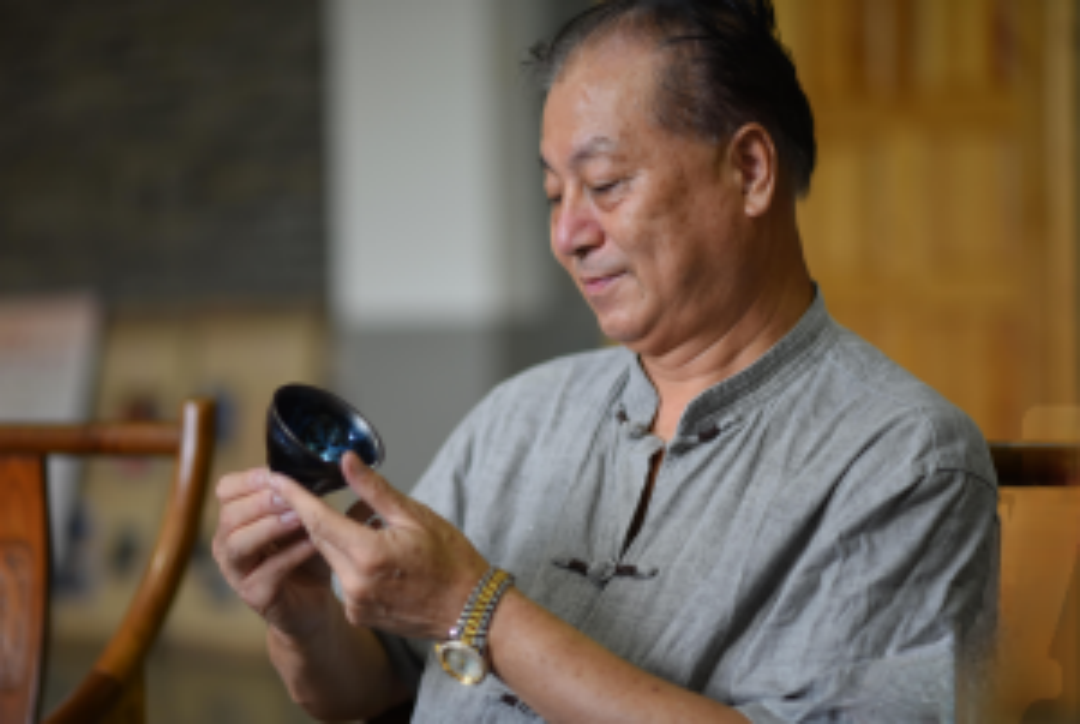
Jian Kiln, one of the famous kilns of the Song Dynasty, also known as “Jian’an Kiln” and “Wuni Kiln”, is distributed in Jianyang Shuiji Kiln, Nanping Chayang Kiln, and Mount Wuyi Yulingting Kiln. The three kiln sites are collectively called Jian Kiln System. Famous for firing black glazed porcelain. Small bowls are the most common, with black mud colored fetal bones and multiple strip-shaped crystal patterns on the glaze surface, as fine as rabbit hair, known as “rabbit hair cups”. There are also those that are burned into “Partridge Spots” and “Silver Star Spots”, which are unique and beautiful. Underglaze grain is a decoration made by using the acidic traces formed by acidic glaze materials. Due to the upward firing of kiln ceramics, the glaze water hangs down, and the finished glaze color at the mouth edge is light. Due to the different slopes of the vessel walls, the flow rate is fast and forms fine streaks, while the flow rate is slightly slower and thicker, forming the shape of rabbit hair. Some vessels have inscriptions on the bottom of them, such as “offering to the emperor” and “entering” cong, which are tribute porcelain.
The black glaze “Jianzhan” produced by Jianyao has a wide influence and is highly valued by tea ceremonies in regions such as Japan, South Korea, and Taiwan. Among them, treasures from the Southern Song Dynasty such as “Yao Bian Tianmu” and “Oil Drop Jian Zhan” are regarded as national treasures by Japan and are renowned throughout the country.
Sun Jianxing, national representative inheritor of national intangible cultural heritage projects, expert enjoying special allowances from the State Council, master’s supervisor of the China Academy of Arts, master of Chinese ceramic art, master of art in the Chinese art industry, director of the China Ceramic Industry Association, director of the China Arts and Crafts Association, vice president of the Ceramic Branch of the China Arts and Crafts Association, member of the China Ancient Ceramics Society, master of arts and crafts in Fujian Province, high-level talent in Fujian Province, candidate for the Provincial “Hundred, Thousand, and Ten Thousand Talents Project”, senior arts and crafts artist, senior technician, engineering master, consultant of the Provincial Arts and Crafts Association, vice president of the Provincial Ceramic Industry Association, director of the Professional Committee for Kiln and Lamp Construction of the Provincial Arts and Crafts Association, honorary president of the Nanping Arts and Crafts Association, director of the Nanping Kiln Ceramic Research Institute, The sentence is: Artistic Director of Xingchen Tianmu Ceramic Research Institute in Nanping City. From 1972 to 1975, he worked as a technician at Dehua Hongqi Porcelain Factory, researching and developing high white, Jianbai, and black glazed porcelain. Graduated from Shaanxi University of Science and Technology with a major in Ceramics in 1978. In 1979, he was seconded to Fujian Light Industry Research Institute and went to Shuiji, Jianyang to restore Jianyao Jianzhan, one of the eight famous kilns of the Song Dynasty that had been lost for 800 years. He won the second prize of Provincial Science and Technology Progress Award (ranking first), the first prize of Municipal Science and Technology Progress Award (ranking first), and the first prize of Shanghai Science and Technology Progress Award (in cooperation with the Chinese Academy of Sciences Shanghai Silicate Research Institute). I have been engaged in ceramic art creation for 50 years, and have developed a series of works including black glaze, yellow (red, blue, gold, silver) rabbit hair, exotic hair, hair transformation, national treasure oil droplets, gold (silver, rainbow) oil droplets, rainbow (gold thread, white spot) partridge spots, rust spots, yellow Tianmu, Polygonum cold juice, gray quilt, gold (silver) colored text, wood leaves, hawksbill turtle, persimmon red, rainbow, kiln transformation, and obsidian Tianmu. Received the “Inheritance Award” for inheritors of Chinese intangible cultural heritage. The works have been collected by the National Art Museum of China, the China National Arts and Crafts Museum, and the National Museum. They have won the Excellent Works Award for Academic Exchange at the International Ceramic Society Conference, and have won national gold and silver awards multiple times. They have also obtained more than ten national patents. Published dozens of papers at the International Symposium on Ancient Ceramic Science and Technology (ISAC). In 2005, he was invited to participate in the International Diesel Kiln Exercise Camp at the World Ceramic Biennial Exhibition in South Korea and delivered a paper speech. In 2009, he successfully held a solo exhibition in Tokyo, Japan. His series of architectural lantern works were selected for the Fujian Provincial Pavilion at the Shanghai World Expo in 2010, and his 10 series of small lantern works participated in the “One Thousand and One Teacups” world tour exhibition. In 2017, the work “Starry Sky Oil Droplets Building Lanterns” was presented as a gift to foreign heads of state at the Xiamen BRICS Conference. The 2018 work “Silver Rabbit Hair Building Lamp” was presented as a gift at the Shanghai Cooperation Organization Summit. In 2019, the artwork “Oil Drip Jar” was presented as a gift to foreign heads of state at the Osaka G20 Conference. In 2019, the works “Oil Drop Fulu Bottle”, “Persimmon Red Wood Leaf Tea Mat Group”, and “Yao Bian Peacock Cup” were awarded the Outstanding Handicraft Badge Certification by the UNESCO World Crafts Council. In 2020, the work “Stars and the Moon” was used as a gift for the Foreign Minister’s meeting in Mount Wuyi.





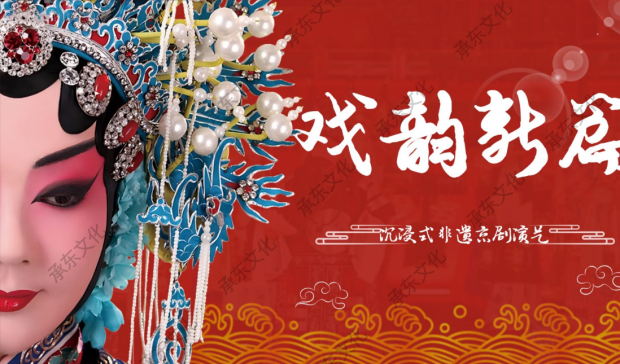
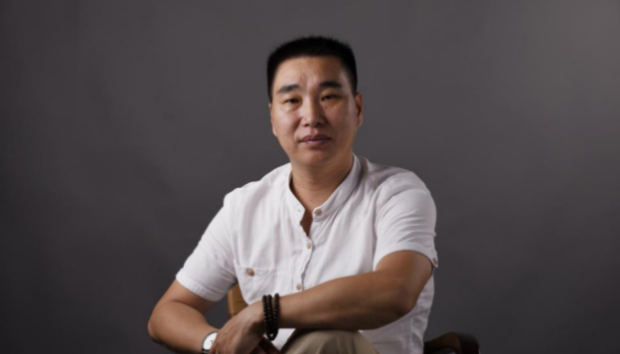
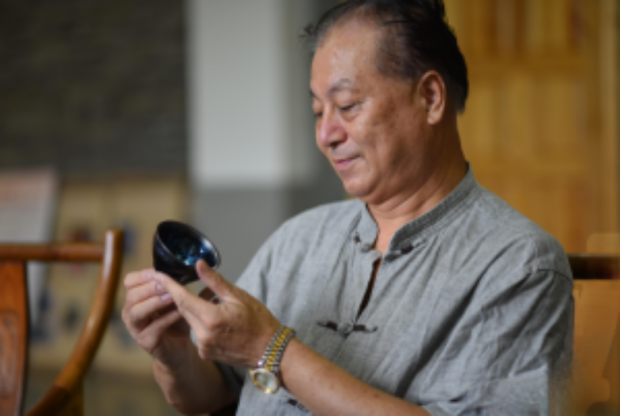
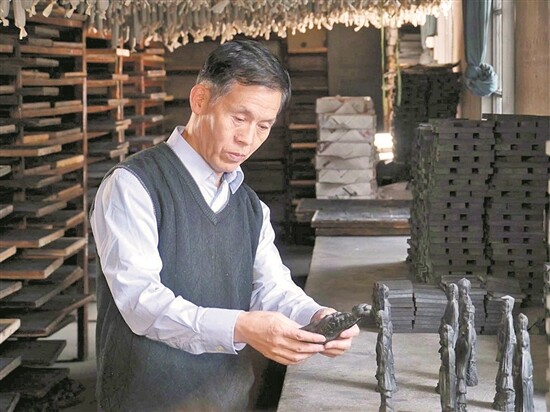
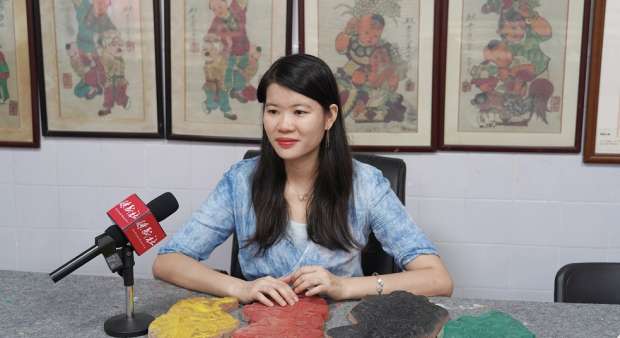
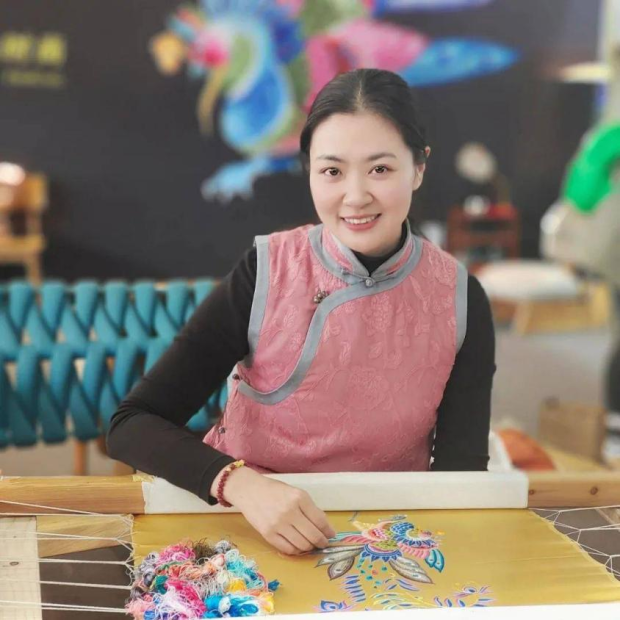

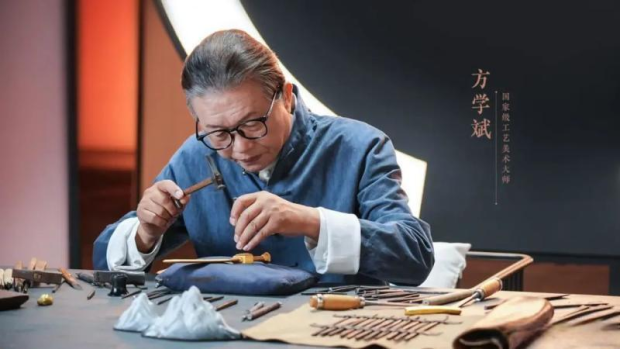

Be the first to leave a comment